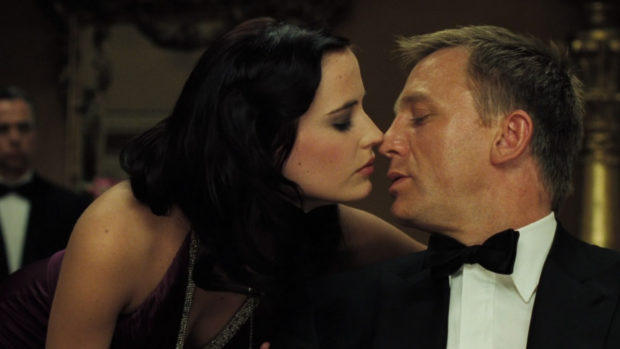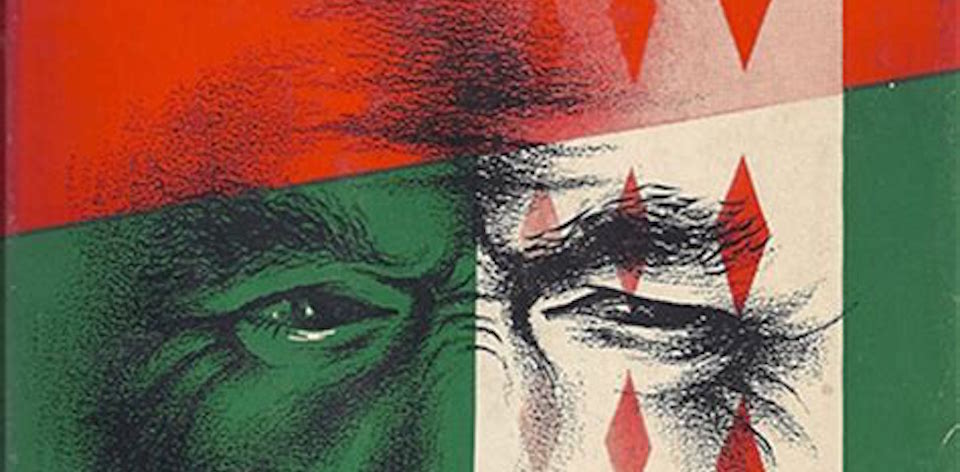Bond. James Bond. Is there a name more synonymous with spying, tuxedos, and shaken cocktails than the British secret agent? Join me as I read all of the James Bond books, encompassing Ian Fleming and beyond. For Your Eyes Only: there’s spoilers ahead.

CASINO ROYALE was released in 1953 onto an unsuspecting public, introducing the world to James Bond. Over six decades, in excess of 40 original novels, and 24 franchise films later, 007 is the word in thrillers. Not for nothing either.
The plot is deceptively simple. Bond is sent to the titular Royale-les-Eaux in Northern France to bankrupt Le Chiffre, the treasurer of a SMERSH controlled French union and a member of the Russian secret service. Aided the beautiful Vesper Lynd and CIA operative Felix Leiter, Bond eventually wins the money
Released around the same time as Raymond Chandler’s The Long Goodbye (and reviewed by Time Magazine in the same issue), Fleming quickly establishes his style with the unapologetic accuracy of a reporter but with the dramatic peaks and troughs of a playwright. Consider the opening lines of the novel:
“The scent and smoke and sweat of a casino are nauseating at three in the morning. Then the soul-erosion produced by high gambling – a compost of greed and fear and nervous tension – becomes unbearable and the senses awake and revolt from it.”
The three part alliterative punch indicates a careful selection of words, but Fleming is also merely stating a fact. It isn’t just nausea it creates, but “soul-erosion,” already suggesting something more lingers beneath the surface than seedy gambling. Like the as-yet-unnamed protagonist, our senses are fully awake to the possibilities of what it to come next. Which is Fleming’s true skill: whether lengthily describing hours of a high-stakes baccarat game, or the faces of the people playing it, Fleming keeps escalating his language just enough to get us to continue turning the page.
The story doesn’t end with the casino, and some of the more memorable parts come after the plot is seemingly resolved. Vesper is captured, and Bond is tortured in one of the more brutal scenes in the book. Described as “naked and defenceless,” he is strapped to a wicker chair while Le Chiffre beats him from the underside. That uncomfortable, leg-crossing feeling you’re experiencing is nothing compared to pain that saw “Bond’s whole body arched in an involuntary spasm. His face contracted in a soundless scream and his lips drew right away from his teeth.” Brutal.

Of course, the brutal tone of the novel is set by 007 himself. Bond is, for want of a better phrase, something of a blunt instrument in this early adventure. Rather than being the debonair and handsome fellow that he has become over the years thanks to the films, his description in this first outing is somewhat more humble. “Bond reminds me rather of Hoagy Carmichael, but there is something cold and ruthless,” remarks Vesper at one point. Bond self-assessment is more analytical:
“His grey-blue eyes looked calmly back with a hint of ironical inquiry and the short lock of black hair which would never stay in place slowly subsided to form a thick comma above his right eyebrow. With the thin vertical scar down his right cheek the general effect was faintly piratical. Not much of Hoagy Carmichael there…”
We have seen many versions of Bond on screen and in print over the years, although none have quite matched this roughly-hewn description that Fleming carves out of the page.
In Vesper we have both the prototype for and the counterbalance to all other ‘Bond Girls’ that have followed. (Some serious spoilers follow, so hang on tight). Introduced as a personal assistant to Head of Section S at MI6, she plays at least two vital roles in the plot. One leans a little close to the damsel in distress trope when she is seemingly kidnapped by Le Chiffre, which is probably the least of Fleming’s literary crimes against women across his 14 Bond books. In the aftermath of Bond’s victory and Le Chiffre’s death, the two believe they can start a new life together, with Bond already penning his resignation note to the service. However, it is revealed that she has been a double agent the whole time thanks to SMERSH blackmailing her over a former lover. When she commits suicide, leaving Bond a note confessing, 007 renounces her. (The third and no less vital role is having a cocktail named after her, but more on that later).
Filmed twice before, once in 1954 for television with Barry Nelson and again as a parody in 1967, the 2006 adaptation from director Martin Campbell was a gritty reboot for the Bond series. Starring Daniel Craig as 007, Eva Green as Vesper Lynd, and Mads Mikkelsen as Le Chiffre, it was one of the most faithful depictions of the novel to date. Although updated for the conventions of the 21st century, partly in light of the grounded style of the Matt Damon starring Jason Bourne films, its strength was that it stuck so closely to Fleming’s text. From the tense card games to the unflinching torture scene, by the time we hear John Barry’s familiar theme in the final moments of the film, Craig has transformed into Fleming’s Bond.

Apart from sending me down a reading and collecting path that is yet to end, CASINO ROYALE has also had a direct impact on my liver. This is, of course, the novel that gave birth to what is arguably the most famous martini in the world: the Vesper. Ordered early on in the book, and not fully revealed until Chapter 7, the very specific recipe is (in the words of CIA man Felix Leiter) “certainly a drink”:
“A dry martini,” [Bond] said. “One. In a deep champagne goblet.”
“Oui, monsieur.”
“Just a moment. Three measures of Gordon’s, one of vodka, half a measure of Kina Lillet. Shake it very well until it’s ice-cold, then add a large thin slice of lemon peel. Got it?”
I’ve mixed these up myself in the privacy of my own home, but there’s various good cocktail bars here in Sydney and Melbourne that will quite happily mix up a version for you. Kina Lillet is no longer in production, and Lillet Blanc doesn’t give quite the same flavour as its 1953 equivalent. Modern substitutes would recommend a drop of bitters or even better, Cocchi Americano instead of Lillet. We also have a wonderful amount of local and imported gins an vodkas available. Just serve it cold.
CASINO ROYALE has been in continuous print since its launch, and while some of it is incredibly dated, there’s a sophisticated rawness that even the later and more developed books can’t quite match. In the absence of any other way to finish this article, I’ll use Fleming’s finale: “The bitch is dead now.”




